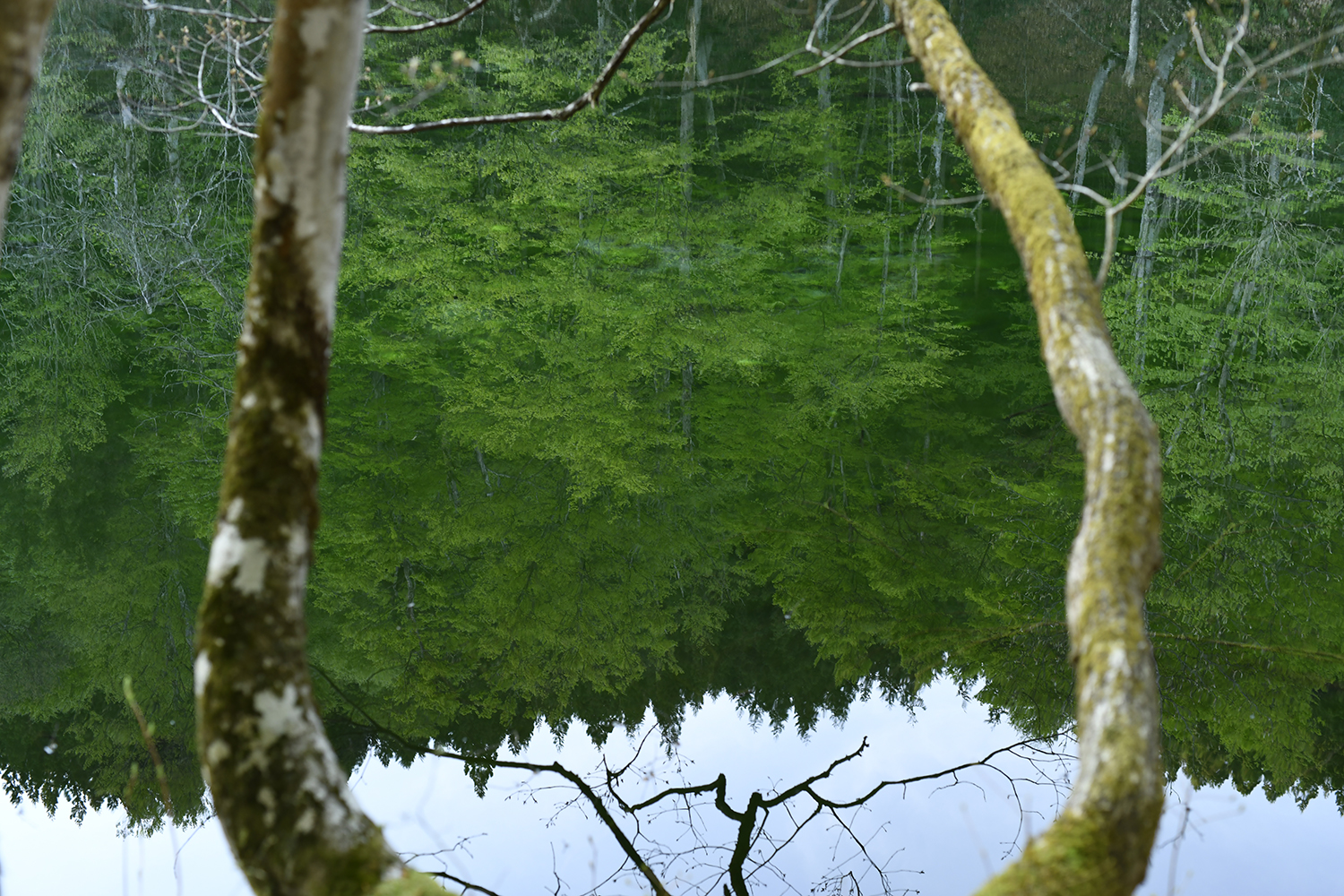 Nao Nakai
Nao Nakai2021.12.04
Story#AgricultureWaterGeography
The Water of Ryugakubo──The Wonder of Nature and the Deity
TextTaiki Honma
 Nao Nakai
Nao Nakai2021.12.04
Story#AgricultureWaterGeography
TextTaiki Honma
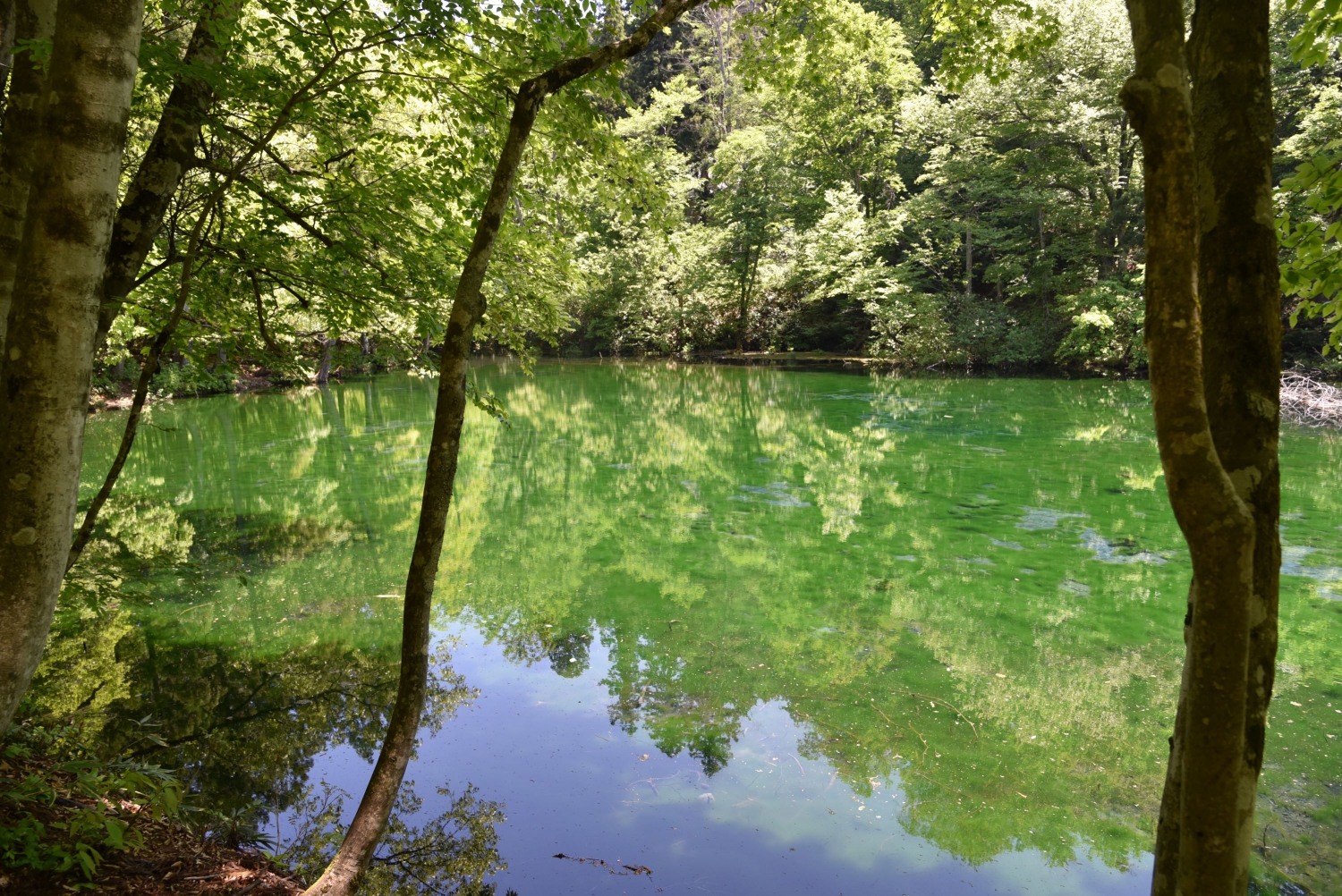
In the quiet forest of broadleaf trees such as beech, mizunara, and Japanese magnolia, Ryugakubo pond suddenly makes an appearance. One can’t help but feel a sense of mysterious awe when catching sight of the clear waters like a mirror in their stillness.
Close to the Niigata-Nagano border lies Tsunan which is known for its heavy snows and as a land blessed with an abundance of water. Recently it is possible to buy bottled Tsunan water, so many people regard it as a place with delicious water.
The king of all of the many springs in the area is Ryugakubo which can be found between the Nakatsu and Shikumi Rivers on the Akazawa plateau on the right bank of the Shinano River.
Every minute 30 tonnes of water gushes out of the spring totalling over 40,000 tonnes each day. The quantity coming out is enough to completely replenish the water in the 220 meter by 70 meter pond (about 1.2 hectares) each day. In 1974 it was designated a nature conservation area by the prefecture, and in 1985 it was chosen as one of the top hundred bodies of water by the Environment Agency. It is not just the quantity but also the quality of the water that comes highly recommended.
It will never dry up no matter how severe the drought…. Ryugakubo, where the dragon spirit is said to live, has been the source of many legends since a long, long time ago.
Legend No. 1
Once upon a time, no rain fell in the area and the people who lived there couldn’t get food or even water. A young man climbed a mountain and came across a sleeping dragon. He took home the egg that was next to the dragon but the angry beast then attacked the village. The villagers complained about their plight and desperately begged for help for the sake of their children. The dragon was moved by their poverty and the desperate pleading of the villagers and made it rain for three days and three nights to create a pond. That was Ryugakubo, and to give thanks to the dragon the villagers worshiped it as a dragon god.
Legend No. 2
Ever since then, in times of water shortage people have come from Matsunoyama and Minami Uonuma to the place where the abundant spring water abounds. When the hot weather continues without ceasing the villagers bring sake in a barrel and make an offering of it to the goddess Benzaiten at Ryugakubo. They then drink the sake and fill the barrel with water to take it home with them. This water is then sprinkled on the land where they want the rain to fall, and it is said that this will definitely bring the rain.
The waters of Ryugakubo do not become stagnant, and with plenty more water continuously pouring out of the spring source they are constantly circulating. The clear waters of the pond reflect the greenery of the trees on the banks, and through spring and summer are colored a deep emerald. Even in the heat of mid-summer the spring water is around 8℃. As a result, the air above the surface of the water is cooled, and a mist is formed over the pond creating a mystical appearance. The shade from the broadleaf trees combined with the cool air means that it stays cool even through the summer heat. When fall comes the colors are reflected and the pond is dyed a deep red.
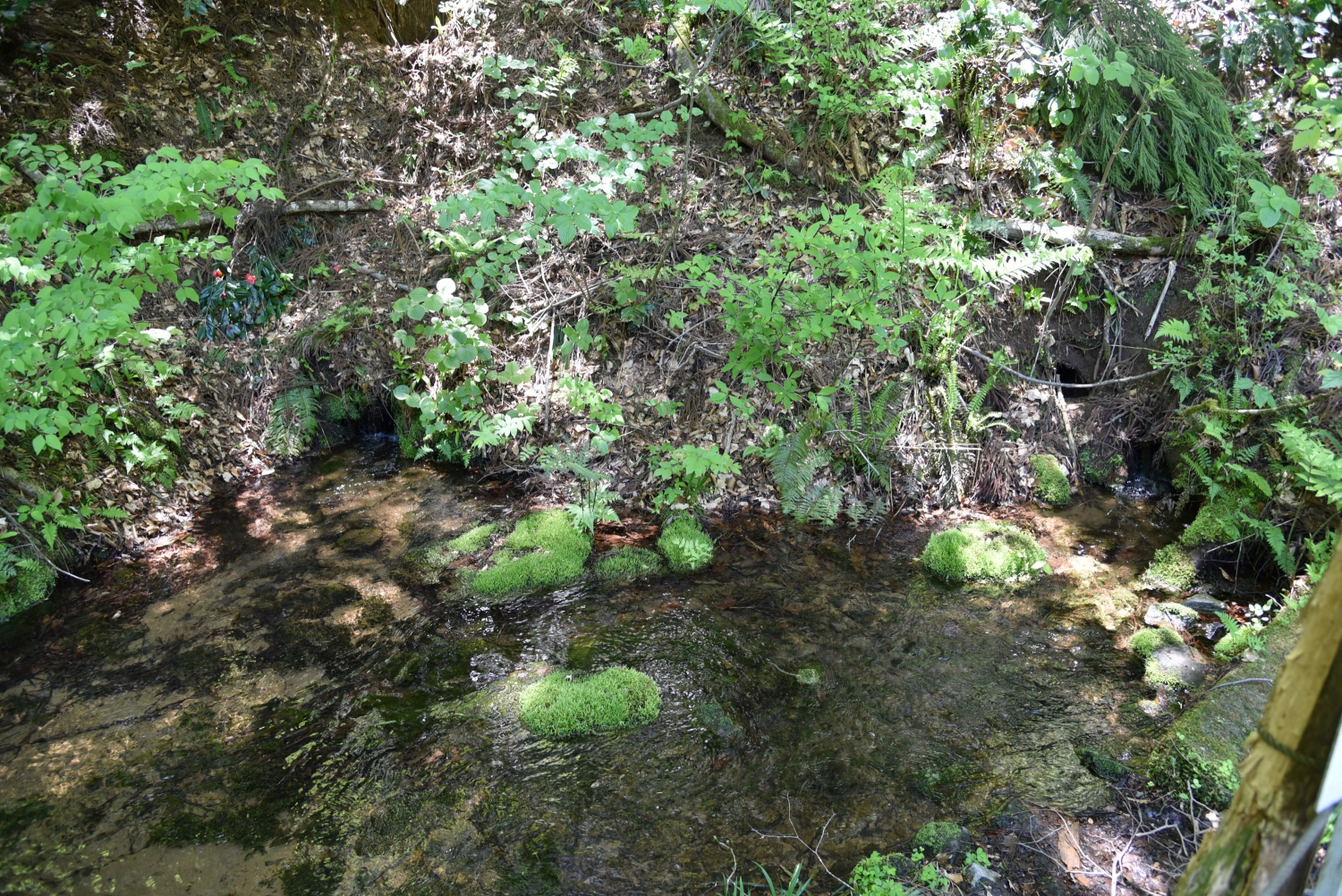
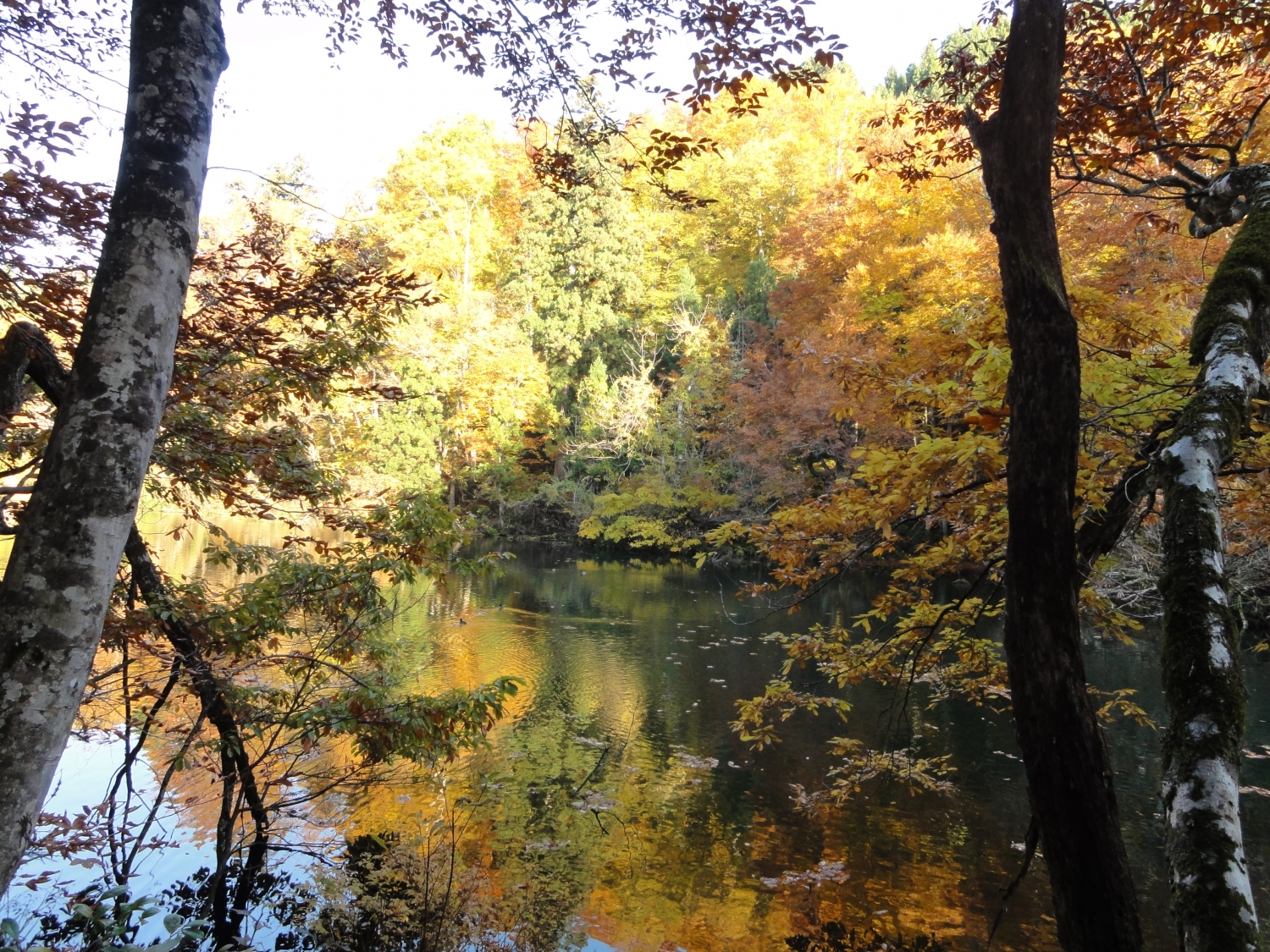
Many people come to see Ryugakubo which with its mysterious and solemn appearance is a suitable setting for the legend of the dragon god. Close to the pond is a place where you can drink the famous waters. The really soft water has a clean and refreshing taste. Even in the heat of summer it comes out of the spring at 7℃~8℃ so is a pleasant temperature. It is popular for visitors to fill a bottle or a tank and take this “blessing” home with them.
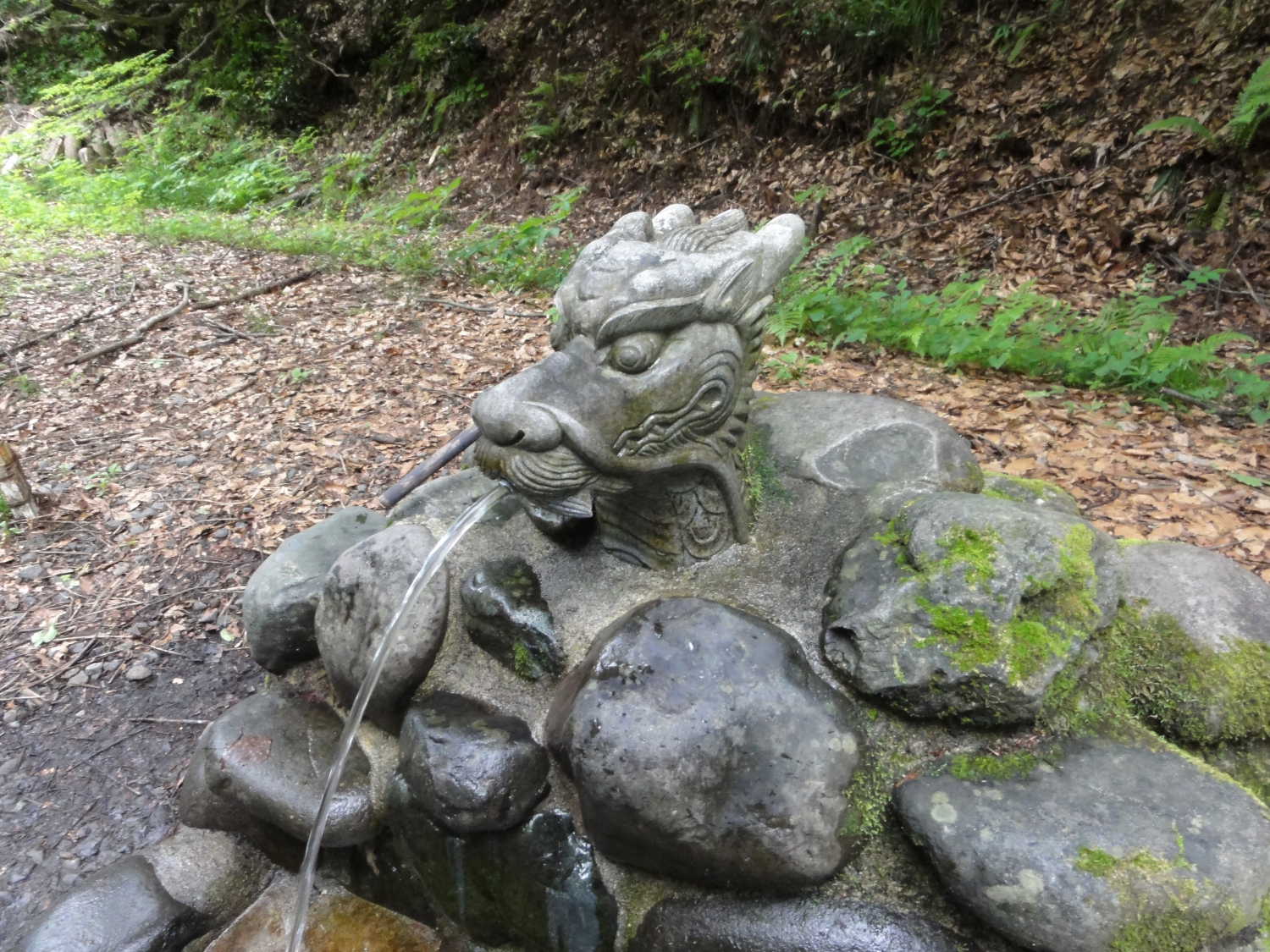
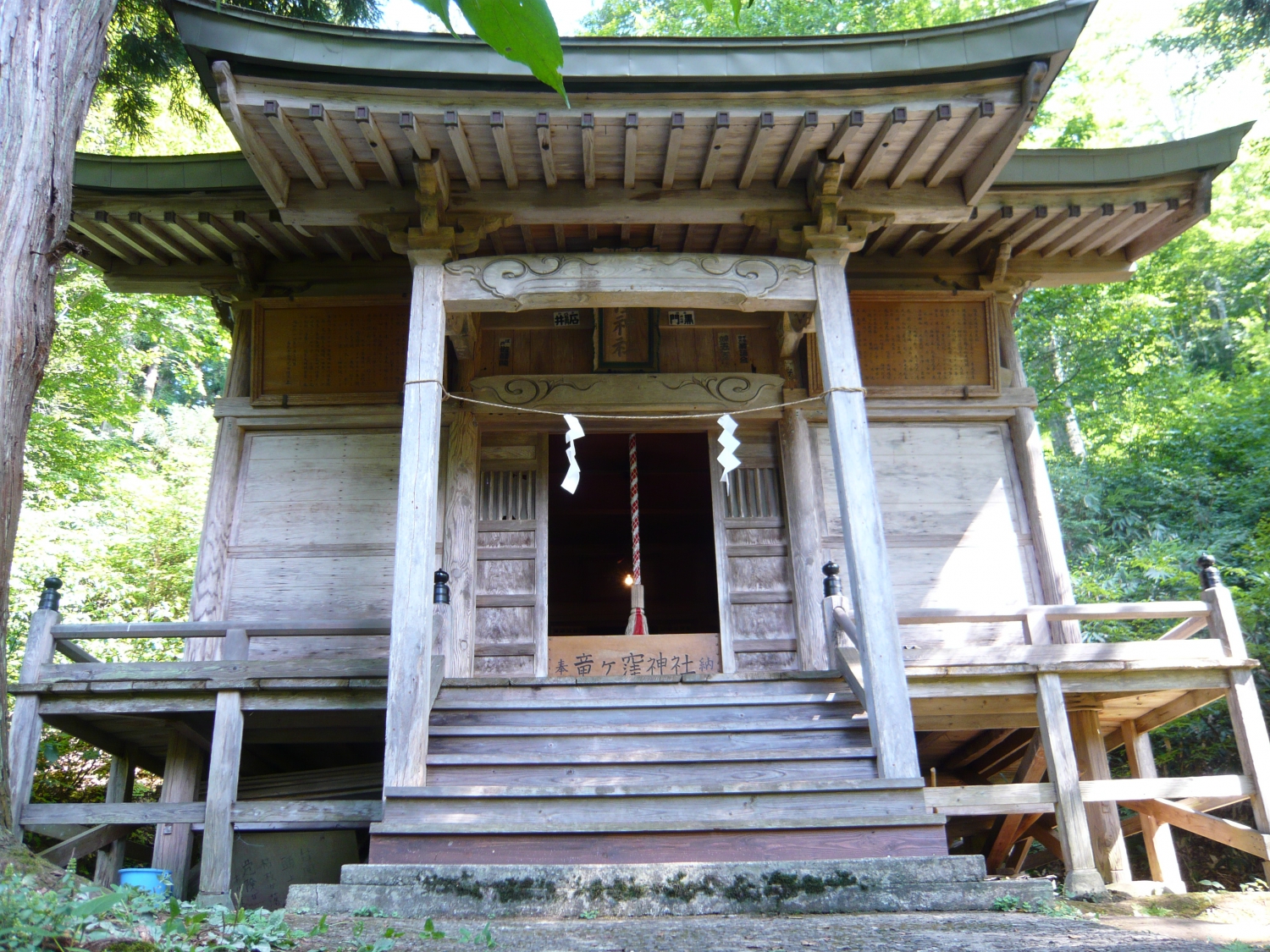
It is surprising to find out that Ryugakubo is located on a plateau sitting at an altitude of 500 meters. The area is known as the Akazawa plateau, and as there is no river nearby the waters of Ryugakubo have always been an important asset for the people living nearby. As the legends state, this clear spring never dries up even during a drought, so people have come from far away villages in desperate times seeking water.
In fact, when it comes to fresh water springs Ryugakubo is not the only one and there are other springs dotted around the Akazawa Plateau. According to the director of the Tsunan Town Forestry Commission, Mr. Kuhachiro Wakui, “Including Ryugakubo there are 10 places with springs. If you add up all of their output there is 1.3 tonnes of water coming out of the ground in various places every second here.”
In a year the total amount of water that comes out of the springs is over 40,680,000 tonnes. So people living in the area, even in the past, never had to dig wells for water. These days all the houses are connected to the mains supply but in the past, household water, and water for the fields all came from the springs, Mr. Wakui explained.
This plateau, at an altitude of 500 meters is a very unique spot that is blessed with an abundant supply of water. It could be called a “miracle” that is the product of the unique terrain of Tsunan.
One of these is the alluvial fan that has been carved out by the river and caused raised river terraces. If you look at a map you can easily understand but around Tsunan you have the strong flows of the Chikumi River, Nakatsu River and Kiyotsu River running north/south, and then east/west there is also the Shinano River.
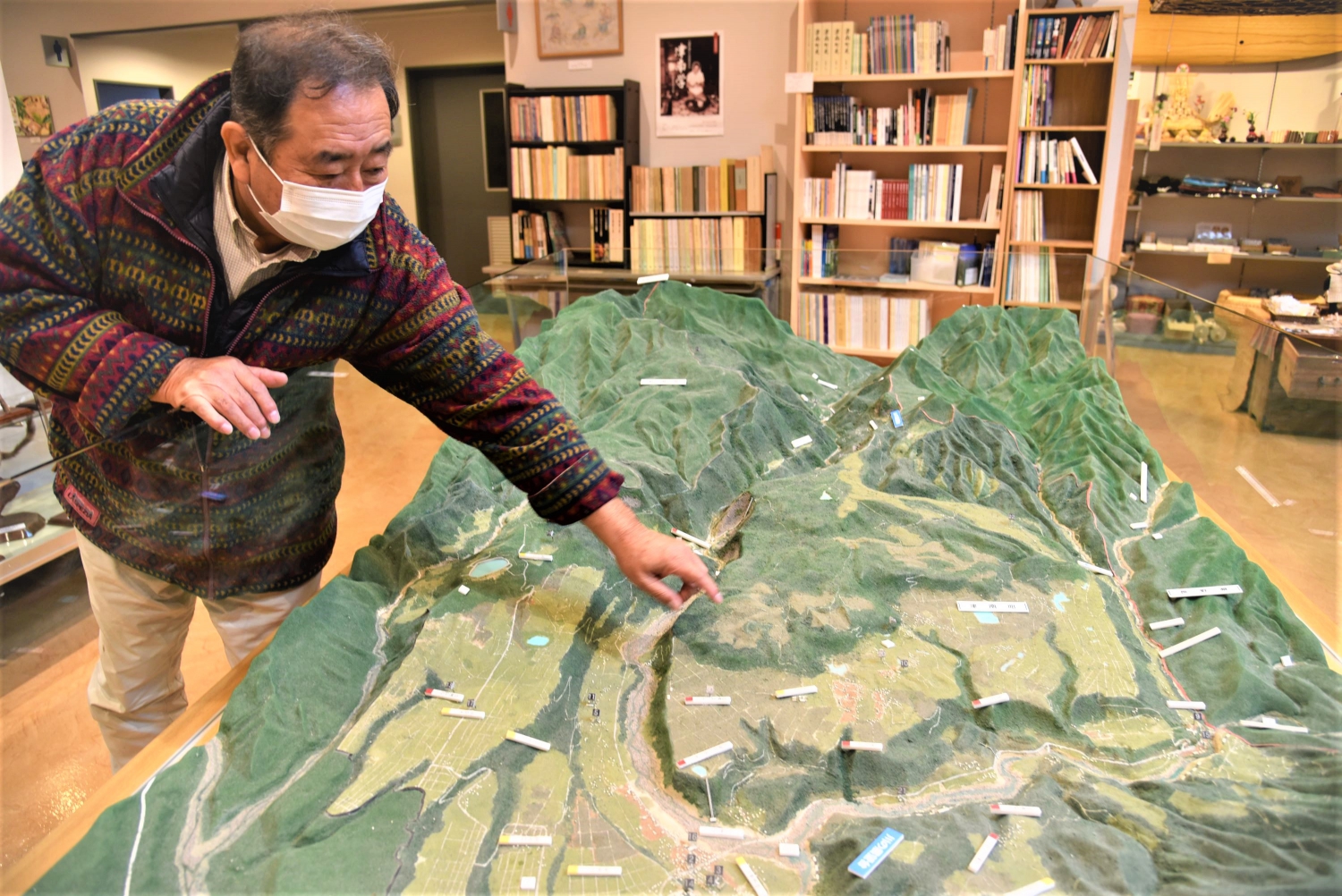
“About 300,000 years ago the area around the Nakatsu River was a large alluvial fan. Due to erosion and uplift it has been formed into the layers of the river terraces,” explained Mr. Sato who is the director and curator of the Naeba Sanroku GeoPark Promotion Department.
The river terraces at Tsunan have 11 or 9 layers. From the “River Observatory” on the plateau on the left bank of the Shinano River you get a panoramic view of the overlapping terraces and their surfaces.
There are river terraces all over the country, but it is only in Tsunan where you can see all the terraces at the same time. For that reason it is without doubt that this is the best river terrace spot in the whole of Japan.
[Mr. Sato]
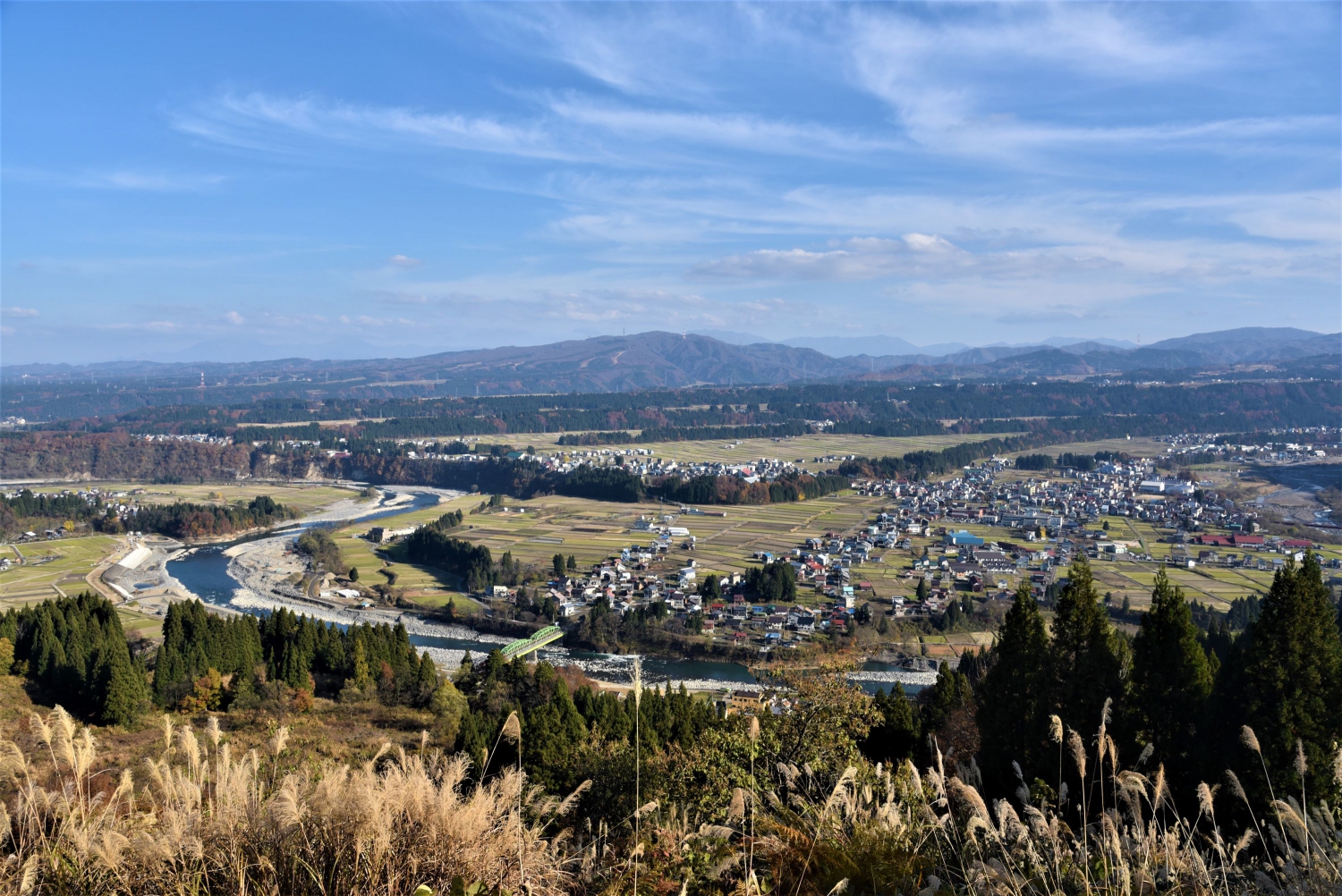
The terrace formation consists of loam layers and river deposits collected on the upper surfaces due to the activity of a nearby volcano. However, below that, there is a hard layer called the Uonuma Formation, which is a bedrock of solidified sediment that was deposited in the past when this land was part of the seabed.
The loam layer and the river sedimentary layer allow water to pass through, but the Uonuma layer is bedrock that is impermeable. The water becomes underground water on the upper surface of the Uonuma Formation and springs from the bottom of the terrace. “If you were to soak a sponge on a table with water, the water would flow out between the sponge and the table. The principle is the same,” explains Mr. Wakui. Therefore, water springs from the bottom of each terrace, and from a long time ago this has been a highland area that is rich in water.
The volcanic activity from the nearby Mount Naeba had a big impact. About 300,000 years ago Mount Naeba erupted and emitted a large quantity of lava. The thick lava slowly flowed downhill and finally stopped close to the current Akazawa plateau. Mr. Sato added, “A large quantity of lava covered the terrace, and as it cooled it formed cracks and domes inside. The water goes in through these and springs out again at the edges of the lava. This is the case for Ryugakubo and most of the other springs on the Akazawa plateau.”
Another miracle is the snow. Tsunan is known throughout Japan as one of the snowiest places in the country. It is usual for there to be two to three meters of snow accumulated, and in a really heavy year this can exceed four meters. According to Tsunan history there were places during the winter of 1927 where the snow was over 8 meters deep.
In this area the amount of cumulative snowfall can be over 20 meters. When this melts it becomes water and soaks into the lava and loam layers as if it were a giant sponge. It then re-emerges from the cliffs of the terraces and the edge of the lava.
[Mr. Sato]
Snow is often referred to as ‘nature’s dam’. Rain quickly flows away but snow remains for a while. The water from snowmelt is stored by the loam and lava as if by a sponge, and Tsunan becomes like a giant water storage tank.
It is said that the snowmelt water from Naeba Sanroku springs out at Ryugakubo and the other spring areas on the Akazawa plateau about 40 years after it fell. During that time it doesn’t come into contact with any kind of grey water. This slow-filtered, pure, ultra-soft water of Tsunan is a miracle brought about by the unique topography and climate of this special area.
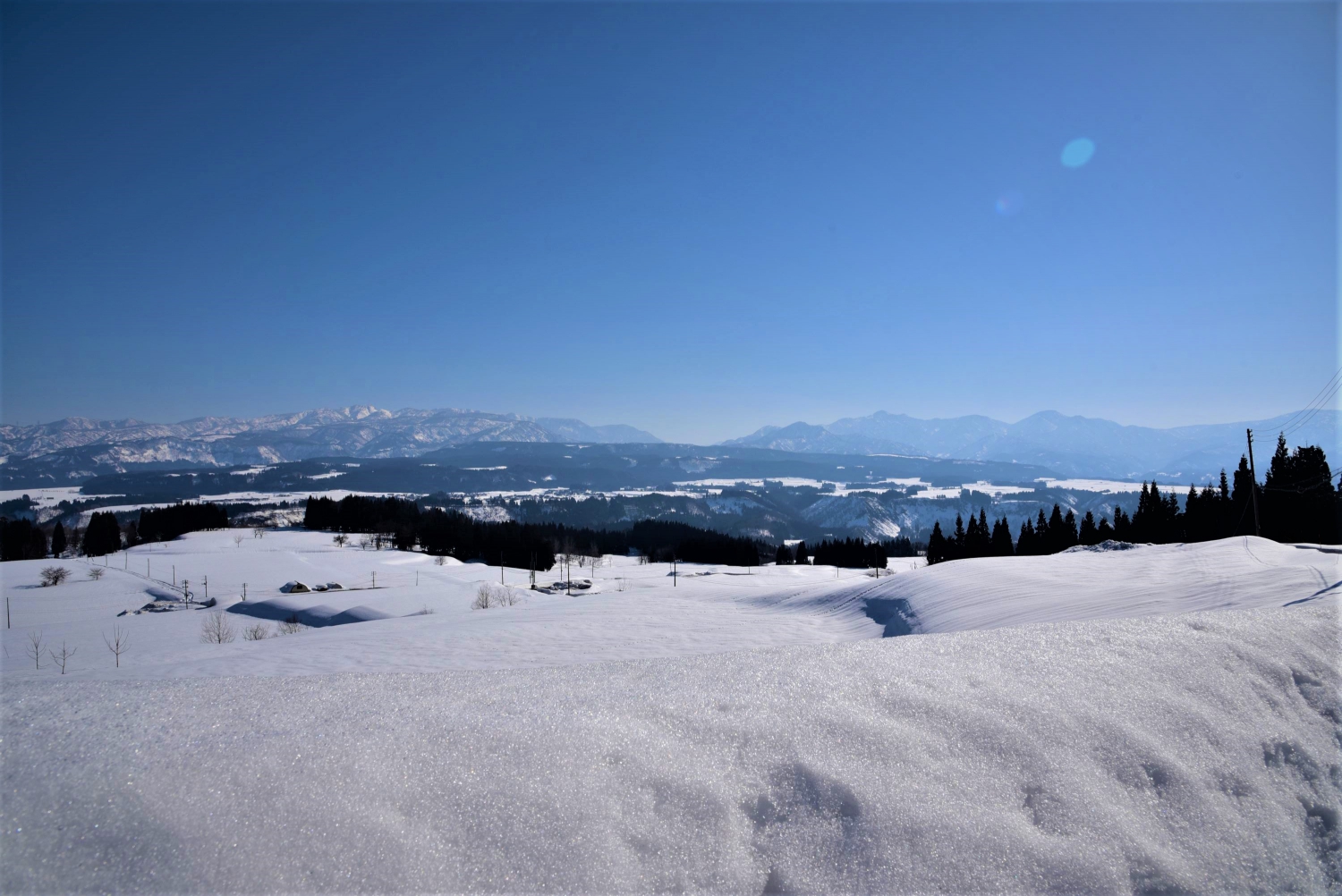
The winter snows are actually related to the interesting geography around the formation of the Japanese archipelago and the Sea of Japan. About 12 million years ago, intense volcanic activity and plate movement started to cause the Japanese archipelago to split from the continent. Then around 8000 years ago, during the early Jomon Period, the Tsushima Strait opened and the warm Tsushima current started to flow into the Sea of Japan. The resulting warming of the Sea of Japan caused drastic changes to the winter climate in the Japanese archipelago. When the cold winter monsoon crosses the warm Sea of Japan from the continent, the temperature difference means that moisture is sucked up. When these clouds laden with snow come up against the Echigo mountain range they drop all the snow at once on the surrounding area.
Many Jomon archeological sites have been uncovered between Tsunan and Tokamachi. Although it is a mountainous region, there are also the flats of the river terraces. Even with the rivers flowing close by there is no danger of flooding. Furthermore, the combination of heavy snow, river terraces, and lava means that there is also an abundance of spring water.
Mr. Sato believes that there was no better place for the Jomon people to create settlements. He also says that even though the heavy snows may make living difficult, even in these modern times, it probably wasn’t the case for the Jomon era.
The snow around Tsunan is heavy, with a high moisture content. If you go north to the Tohoku area the temperatures are lower and the snow becomes lighter and more powdery. Unlike here where it piles up, there it would be blown around by the wind.
[Mr. Sato]
These thick walls of snow act as a windbreak and also can be used as insulation. It is the same principle that allows the inside of an igloo to be unexpectedly warm. With everything covered by snow it is possible to transport things like wood by sledge, and hunting becomes easier as it is possible to follow the tracks of the prey in the snow.
These days we think of heavy snow as an inconvenience but in Jomon times the same snow could make life easier in some respects.
[Mr. Sato]
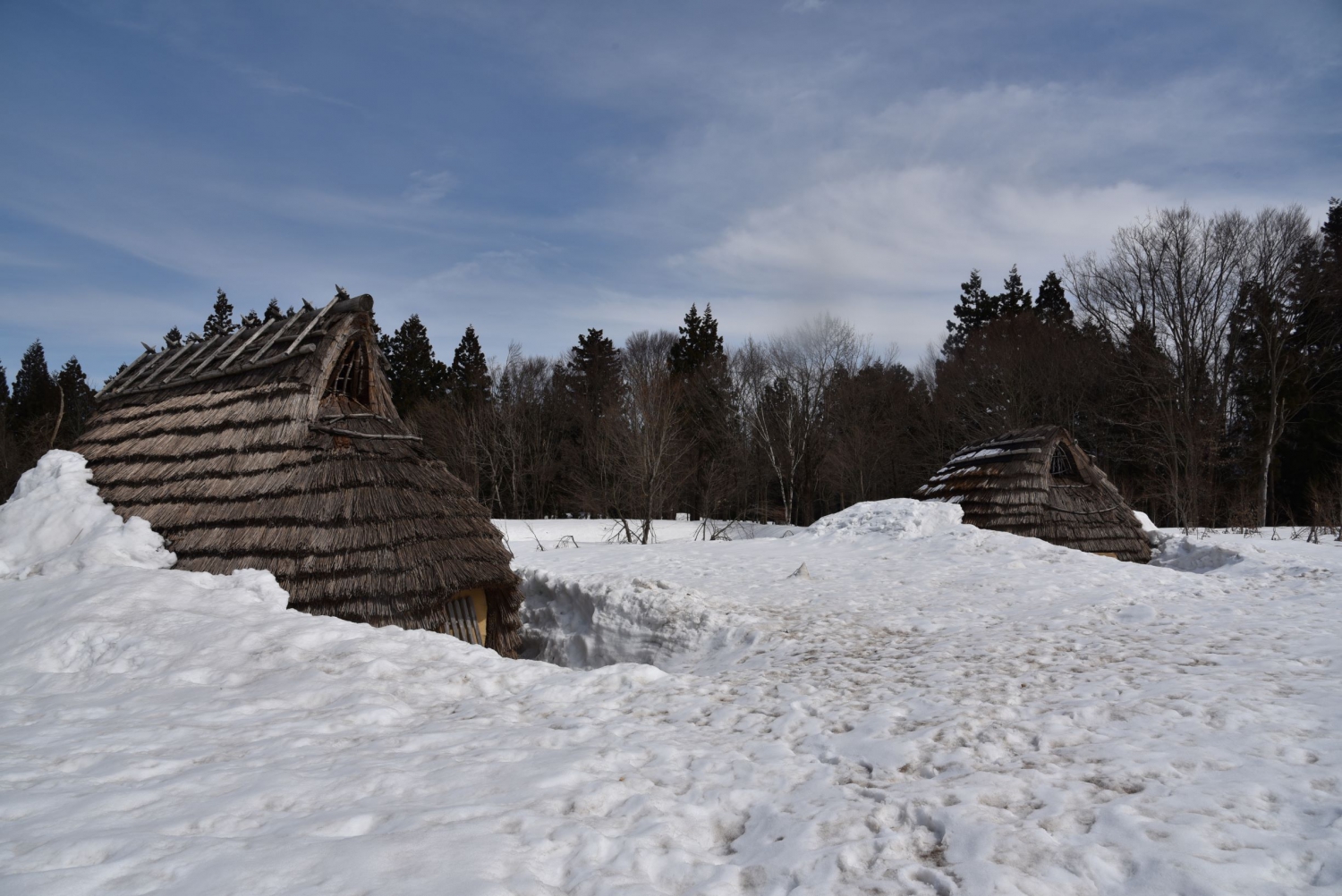
The delicate balance of topography and climate dates back to the formation of the Japanese archipelago and the Sea of Japan. It created a very special natural environment in Tsunan, as well as making it an important base for Jomon culture. Tsunan water, which has been brought about by eternal nature, has long supported our ancestors and has deep connections to history. Pure water gushing from the spring that never runs dry. Just like the legend of the dragon deity this is truly a blessing from the heavens, and indeed a sacred water.
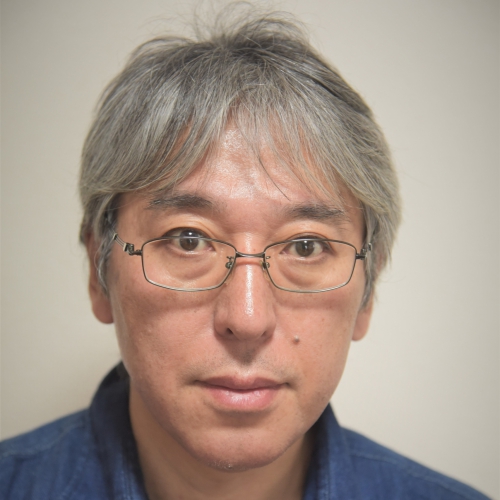
TextTaiki Honma
Agricultural and Jomon Experience Center Najomon
This is an experiential learning facility for agriculture, Jomon, and the f…
| 住所 | 835 Shimofunatootsu, Tsunan machi, Nakauonuma gun, Niigata, 949-8201 |
Ryujin-no-Yakata
This is an onsen facility close to Ryugakubo pond which has been selected a…
| 住所 | 7031 Oaza Yachi, Tsunan-machi, Nakauonuma-gun, Niigata,, 949-8204 |
Ryugakubo
Ryugakubo Pond has been formed by the flow of a large quantity of groundwat…
| 住所 | 6217 Yachi, Tsunan machi, Nakauonuma-gun, Niigata, 929-8204 |
River Observatory (River Terrace and Shinano River Observatory)
The River Observatory sits at an altitude of 450m and from there you can lo…
| 住所 | Tomaru, Tsunan-machi, Nakauonuma-gun, Niigata, 939-8206 |
AgricultureArtForest
AKEYAMA: Learning About Satoyama Culture in a Hidden Region Deep in Japan
TextTaiki Honma
ForestGeography
Walk Amid Spectacular Views of the Naeba Foothills and Akiyama-go!
TextTaiki Honma
AgricultureWaterSnow
The Story of Tsunan’s Water
TextMatt Klampert
PeasefulForestGeography
A Look into the Calming and Peaceful Forests of Tsunan
TextMatt Klampert
PeasefulWaterGeography
New Greenpia Tsunan — a sustainable hotel
TextTaiki Honma
©2025 Tourism Tsunan